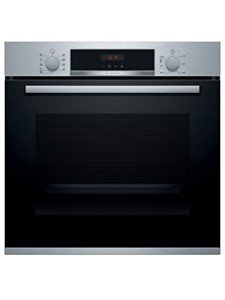The Greatest Sources Of Inspiration Of Self Cleaning Oven Specs
Understanding Self-Cleaning Oven Specifications: A Comprehensive Guide
In the world of home home appliances, self-cleaning ovens have actually emerged as a significant innovation, assuring to conserve time and enhance benefit for homeowners. Equipped with detailed features and advanced technology, these ovens are developed to deal with one of the least pleasurable elements of cooking— cleaning. This article supplies an in-depth take a look at the specs of self-cleaning ovens, their functional systems, advantages, drawbacks, and a detailed FAQ section to attend to common inquiries.
What is a Self-Cleaning Oven?
A self-cleaning oven is a kitchen area home appliance that uses heats to burn off food residues and spills inside the oven's interior. This process lowers gunk to ash, making it much easier to wipe away throughout the cooling duration. Self Cleaning Oven Costs of self-cleaning ovens use one of two approaches: the pyrolytic process, which warms the oven to very high temperatures, and the steam cleaning method, which uses moisture to loosen particles.
Here are key specifications and features to consider:
Key Specifications of Self-Cleaning Ovens
Specification
Description
Cleaning Methods
Pyrolytic (high heat) or Steam Cleaning (moisture)
Temperature Range
Generally between 800 ° F (427 ° C) and 1,000 ° F (538 ° C)during pyrolytic cleaning Time Efficiency Cleaning cycle usually lasts in between
2 to 6 hours, depending on the design and technique Oven Size Available in various sizes, including standard
(30 inches
)and compact( 24 inches )Material Built with long lasting products that can withstand high temperature levels
**(e.g., enamel finishing)Control Type Digital touch controls, dials, or smart technology compatibility Safety Features Auto-lock throughout cleaning
, temperature
sensing units, and child safety locks Energy Efficiency Differs by model; newer units frequently adhere to energy efficiency standards
Additional Features Convection settings, steam functions, hold-up start timer, self-diagnostics, Wi-Fi connectivity Types of Self-Cleaning Ovens When thinking about a self-cleaning oven, it's vital to comprehend the various
types available, as this can substantially affect performance and use: Pyrolytic Ovens: Operate at very high temperature levels(around 900 ° F)to
**
incinerate food residues. Typically
have a dedicated self-cleaning cycle that can last anywhere from 2 to 4 hours. Need appropriate ventilation due to the high heat created. Steam Cleaning Ovens:
Utilize steam to condense and
- relax gunk and grease for easier removal. Normally require only about Self Cleaning Oven Durability to clean.
- Often more energy-efficient and produce less odor compared to pyrolytic models. Mix Ovens
- : Feature both pyrolytic and steam cleaning options, using flexibility based
on the kind of cleaningrequired
- . Frequently included you can try these out and features. Advantages of Self-Cleaning Ovens Self-cleaning ovens use several benefits that make them popular amongst users: Time-Saving: Eliminates the need for manual scrubbing and substantial cleaning.
*Reduce of Use: Most modern ovens have easy-to-navigate controls for setting cleaning cycles. Constant Results: Provides uniform cleaning, guaranteeing that all corners of the oven are resolved. Sanitization: High heat can eliminate bacteria and eliminate pathogens, contributing to a cleaner
cooking environment. Disadvantages of Self-Cleaning Ovens Regardless of their benefits, self-cleaning* ovens also feature some drawbacks: Heat Generation: The high temperatures can cause pain in the cooking area and may not appropriate for smaller areas. Expense: Generally more costly than standard ovens due to innovative technology. Long Wait Times: While they clean themselves, the process can take several hours, and users need to plan accordingly. Prospective Damage: Some self-cleaning cycles may harm older components or cause wear with time, especially in standard models. Regularly Asked Questions(FAQs )1. **
How typically should I utilize the self-cleaning function
? It is advisable to use the self-cleaning function every few months or as required, depending on how often you use theoven and the kinds of food you cook. 2. Is it safe to be around the oven while it remains in self-cleaning mode? While the self-cleaning cycle is running, it is recommended to stay outside the kitchen area due to high temperature levels and smoke.* *Many ovens have safety features that lock the door during this time. 3. Can I by hand clean up the oven throughout a self-cleaning cycle? No, it is not safe totry manual cleaning while the self-cleaning cycle is in operation. Allow the cycle to finish and after that wipe away the recurring ash.
4. Can I utilize oven cleaning products in a self-cleaning oven? It is not advisable to use chemical oven cleaners —————————————————————————————————————————————————————————-
**
on a self-cleaning oven, as they can damage the interior and alter the effectiveness of the self-cleaning feature. 5. Do all ovens have a self-cleaning alternative? No, not all ovens are equipped with a self-cleaning alternative. When buying an oven, make sure to examine if the self-cleaning feature is offered. Self-cleaning ovens provide amazing benefit for those who value efficiency in their cooking routines. Understanding the specifications and performances of these ovens permits purchasers to make informed choices that best match their cooking and cleaning requirements. Regardless of some drawbacks, their time-saving abilities and deep cleaning capacity make them a strong competitor in modern-day cooking areas. Whether going with a pyrolytic, steam, or combination self-cleaning oven, an educated approach will boost one's experience and complete satisfaction within the culinary area. 